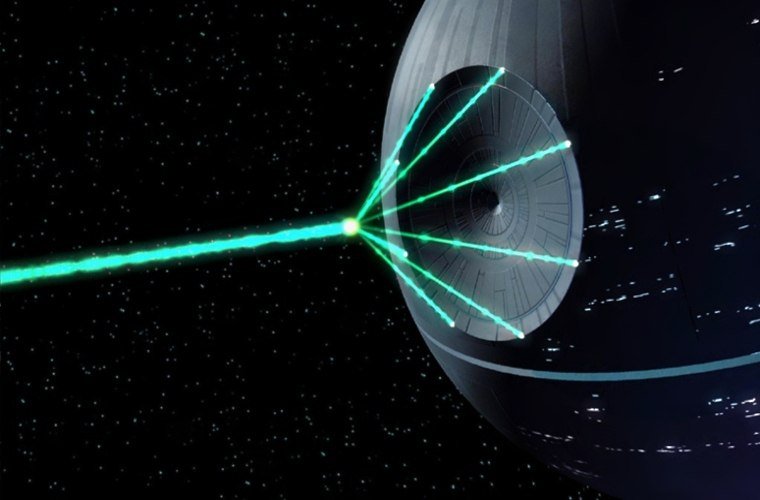Saturn’s moon Mimas, often referred to as the “Death Star” moon due to its similarity in appearance to the fictional Star Wars man-made space station, appears to have an underground ocean, much like those found on fellow Saturn moon Enceladus and Jupiter’s icy moon Europa.
Previous readings and models seemed to indicate that Mimas was likely frozen solid. However, this latest analysis seems to support the idea of a subsurface ocean on Mimas, adding it to the list of places within the solar system humans may find extraterrestrial life.
BACKGROUND: INTERIOR WATER OCEAN WORLDS LIKE MIMAS MAY BE HOME TO E.T.
Known as interior water ocean worlds (IWOWs), places like Europa and Enceladus have recently moved to the top of the extraterrestrial life hunting list. Enceladus spews a huge plume of water into space, most likely originating from this type of underground body of liquid water, which has become a theoretical target for future life-hunting missions.
Now, a team of researchers have taken a closer look at their data and performed updated simulations, leading them to determine that Saturn’s moon Mimas likely supports an underground ocean as well.


ANALYSIS: MIMAS EXPANDS DEFINITION OF A POTENTIALLY HABITABLE WORLD
When scientists at the Southwest Research Institute (SwRI) set out to study Mimas, they expected to prove that it was a frozen, inert ball of rock and ice hanging space. That’s mainly because its inactive surface features and diminutive size seemed to indicate it didn’t possess the key, heat-generating geological dynamics to support an underground ocean.
“IWOWs, such as Enceladus and Europa, tend to be fractured and show other signs of geologic activity,” said SwRI’s Dr. Alyssa Rhoden, a specialist in the geophysics of icy satellites in a press release announcing the tantalizing research. “Because the surface of Mimas is heavily cratered, we thought it was just a frozen block of ice.”
To confirm their assumptions of an ocean-less Mimas, Rhodes and her SwRI team used tidal heating models by plugging in figures that would best support a “steady-state ice shell” 14-20 miles thick sitting atop a liquid ocean. And to their surprise, the results didn’t show that Mimas was frozen solid, but instead seemed to fit the idea of an IWOW Death Star moon perfectly.
“Most of the time when we create these models, we have to fine-tune them to produce what we observe,” said Rhoden. “This time evidence for an internal ocean just popped out of the most realistic ice shell stability scenarios and observed librations.”
“Turns out, Mimas’ surface was tricking us,” added Rhodes, “and our new understanding has greatly expanded the definition of a potentially habitable world in our solar system and beyond.”
OUTLOOK: THAT’S NO MOON – IT’S AN IWOW!
With results published in the Journal Icarus, the SwRI team notes that more data will be needed to verify (or refute) their Mimas models. Fortunately, a key aspect of these models shows that heat flow from the moon’s surface was particularly sensitive to the thickness of the ice shell, “something a [future] spacecraft could verify.”
Still, Rhodes and her team remain cautious of their unexpected yet tantalizing results, specifically because the overall characteristics of Mimas led them to believe such an underground body of water was unlikely.
“Although our results support a present-day ocean within Mimas, it is challenging to reconcile the moon’s orbital and geologic characteristics with our current understanding of its thermal-orbital evolution,” said Rhoden. “Evaluating Mimas’ status as an ocean moon would benchmark models of its formation and evolution.”
“This would help us better understand Saturn’s rings and mid-sized moons as well as the prevalence of potentially habitable ocean moons, particularly at Uranus,” added Rhodes. “Mimas is a compelling target for continued investigation.”
Wait. That’s no moon!
Follow and connect with author Christopher Plain on Twitter: @plain_fiction

